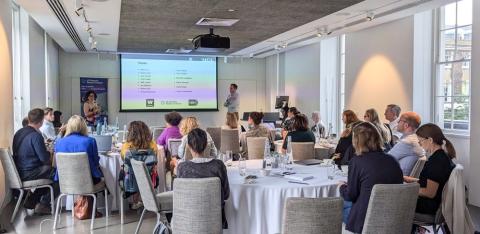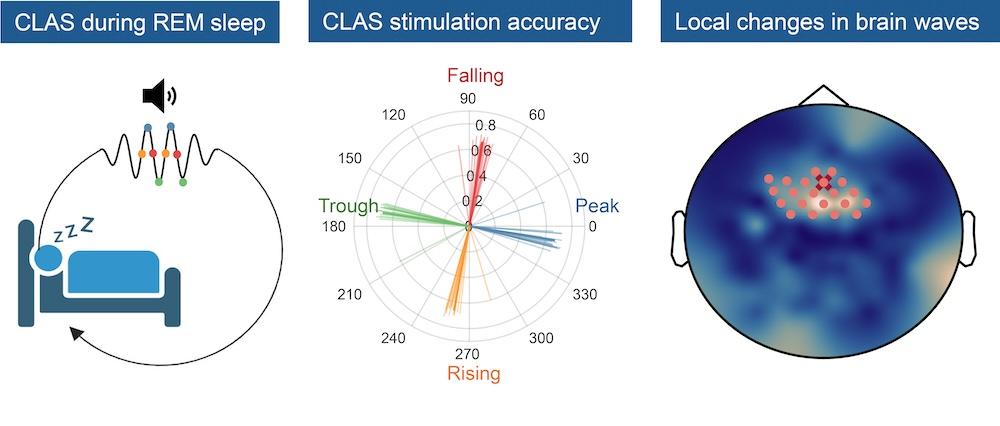Key details
Multimodel features that characterise REM sleep
Rapid eye movement (REM) sleep, one of the two main sleep stages, is reduced in Alzheimer’s Disease and has been linked to cognition, memory and mood. Reduced REM sleep increases the risk for cognitive decline in ageing and dementia, and mortality. Yet, it remains unclear how REM sleep promotes cognition and whether the restorative processes occurring during REM sleep can be enhanced.
This UK DRI programme, led by Dr. Valeria Jaramillo, will investigate at an unprecedent scale the many and multimodal features that characterise human REM sleep and relate them to daytime function. The ultimate goal of the Jaramillo Lab is to define how REM sleep promotes brain and body health and how REM sleep can be improved to enhance cognition in ageing and dementia.
Latest news



Dr Valeria Jaramillo
Dr Valeria Jaramillo is an Emerging Leader at the UK DRI Centre for Care Research & Technology. Find out more about her career and expertise on her profile page.

Research summary

Closed-loop auditory stimulation (CLAS) approach to modulate brain oscillations during REM sleep, Left: Sounds are precisely timed to an individual’s brain waves, Middle: Accuracy of stimulation, Right: Changes in brain waves in targeted brain area Credit: Valeria Jaramillo
Understanding and improving REM sleep in ageing and dementia
Sleep is crucial for brain and body health. Rapid eye movement (REM) sleep is associated with memory, cognition and mood and is reduced in Alzheimer’s Disease (AD) and cognitively unimpaired Apolipoprotein E ɛ4 (APOE4) carriers, a strong genetic risk factor for AD. Recent population-based studies further demonstrated that reduced REM sleep is a strong predictor for cognitive decline. Furthermore, REM sleep EEG slowing has been shown to be the sleep characteristic most strongly associated with cognitive impairment. In addition to cognition, REM sleep also strongly predicts mortality. Thus, it is very clear that REM sleep is important for both health and cognition, yet most research efforts have focused on the other main sleep stage, non-rapid eye movement (NREM) sleep.
Sleep is highly dynamic, and periods of REM sleep occur at regular intervals. Within REM sleep various dynamic features occur and importantly, although many studies have focused on the brain, these features can be observed across the whole body. Interestingly, these features do not occur in isolation, but they often occur together and therefore it has been proposed that REM sleep should further be subdivided into two different substages, so-called phasic and tonic REM sleep, depending on the presence or absence of these features. Indeed, studies differentiating between phasic and tonic REM sleep have demonstrated major differences between the two substages. Yet, REM sleep is still regarded by many as a homogeneous state.
With the ultimate goal to discover the mechanisms by which REM sleep contributes to cognition, the team will perform multimodal assessments of dynamic REM sleep features and relate them to daytime function in humans. These relationships will not only be tested on a correlational basis, but causality will be determined using a perturbational approach. For this, closed-loop auditory stimulation will be used, a novel approach that has recently been established by Dr. Jaramillo for the modulation of REM sleep oscillations. Finally, REM sleep interventions will be designed and tested to evaluate whether these can enhance cognition in ageing and dementia.
The main objectives are:
- To investigate how dynamic REM sleep features are linked to cognitive function, subjective sleepiness, and mood
- To evaluate how these REM sleep features change with age and how this is linked to changes in cognition, subjective sleepiness, and mood
- To evaluate whether an intervention modulating REM sleep brain oscillations using closed-loop auditory stimulation can improve daytime function in ageing and dementia
Specific techniques:
- High-density electroencephalography
- Closed-loop auditory stimulation
- Temporal interference electrical stimulation
Key publications
Vacancies
Collaborators











Lab funders
Thank you to all those who support the Jaramillo Lab!


